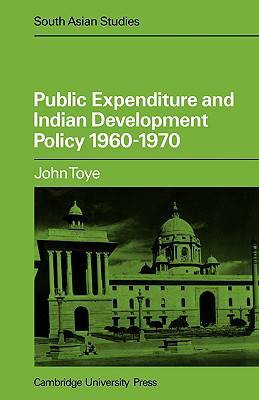
- Afhalen na 1 uur in een winkel met voorraad
- Gratis thuislevering in België vanaf € 30
- Ruim aanbod met 7 miljoen producten
- Afhalen na 1 uur in een winkel met voorraad
- Gratis thuislevering in België vanaf € 30
- Ruim aanbod met 7 miljoen producten
Zoeken
Omschrijving
Of the many different ways in which economists have tried to analyse public expenditure, the most relevant to Indian economic development is that which links the level of public expenditure with the rate at which the state can accumulate capital. The abstract theory of this link, however, must be complemented by a historical account of the degree to which a state accumulation policy was understood by Indian policy makers, and of the other (often inconsistent) elements in the economic strategy of Indian nationalism. After attempting to provide accounts both of the abstract theory and of the institutional and policy context within which it was applied, this book analyses original empirical data on public expenditure in India between 1960 and 1970. The real growth rate of public expenditure, its functional and economic composition at the all-India level are presented, and the strong contrast between the patterns of the first and last five year periods is elucidated. The effect of the 1965-67 droughts and bad harvests in producing this contrast is assessed.
Specificaties
Betrokkenen
- Auteur(s):
- Uitgeverij:
Inhoud
- Aantal bladzijden:
- 292
- Taal:
- Engels
- Reeks:
- Reeksnummer:
- nr. 25
Eigenschappen
- Productcode (EAN):
- 9780521050029
- Verschijningsdatum:
- 3/12/2007
- Uitvoering:
- Paperback
- Formaat:
- Trade paperback (VS)
- Afmetingen:
- 140 mm x 216 mm
- Gewicht:
- 371 g

Alleen bij Standaard Boekhandel
+ 75 punten op je klantenkaart van Standaard Boekhandel
Beoordelingen
We publiceren alleen reviews die voldoen aan de voorwaarden voor reviews. Bekijk onze voorwaarden voor reviews.











